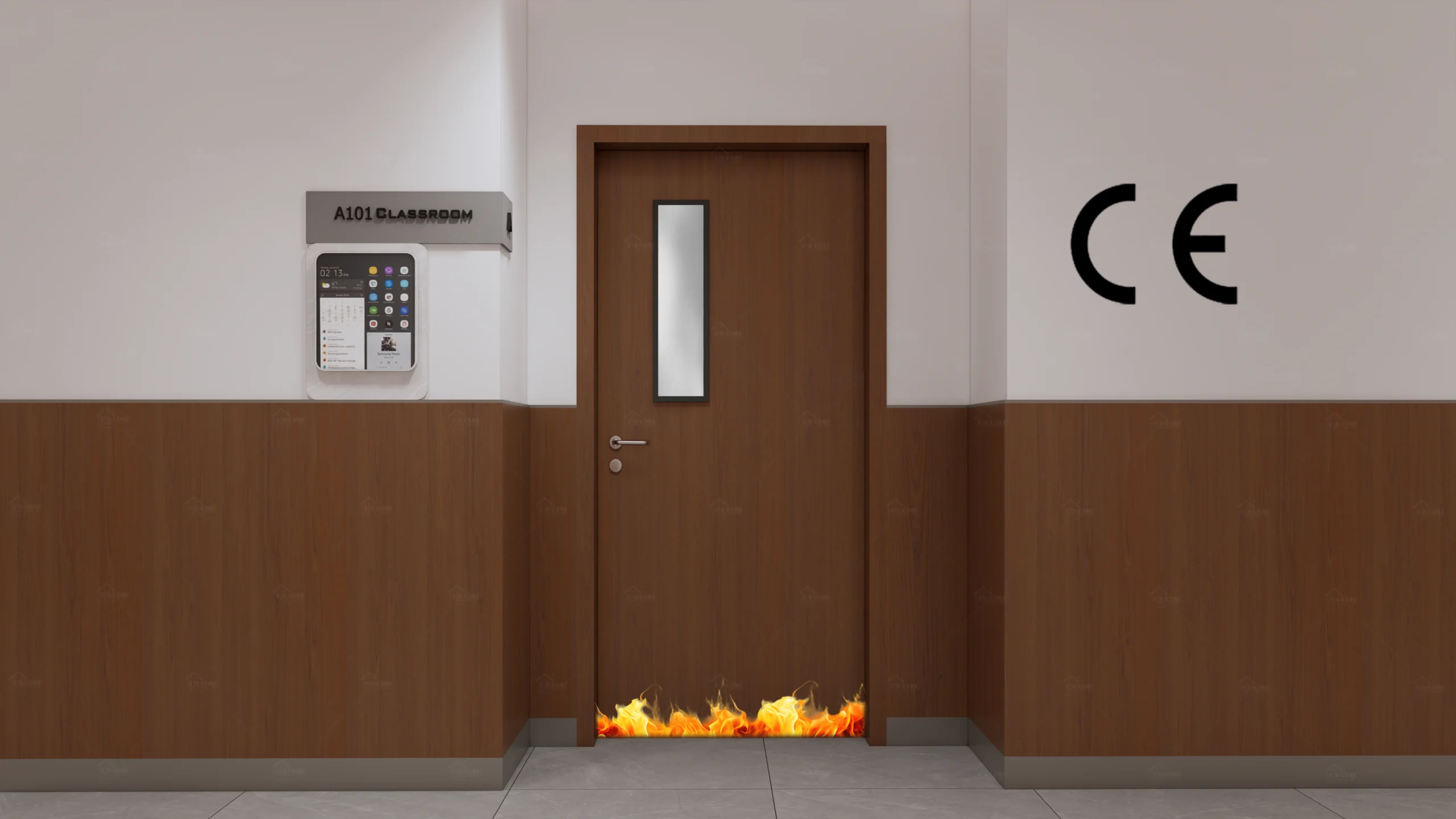What is a lacquered door?
What is a lacquered door?
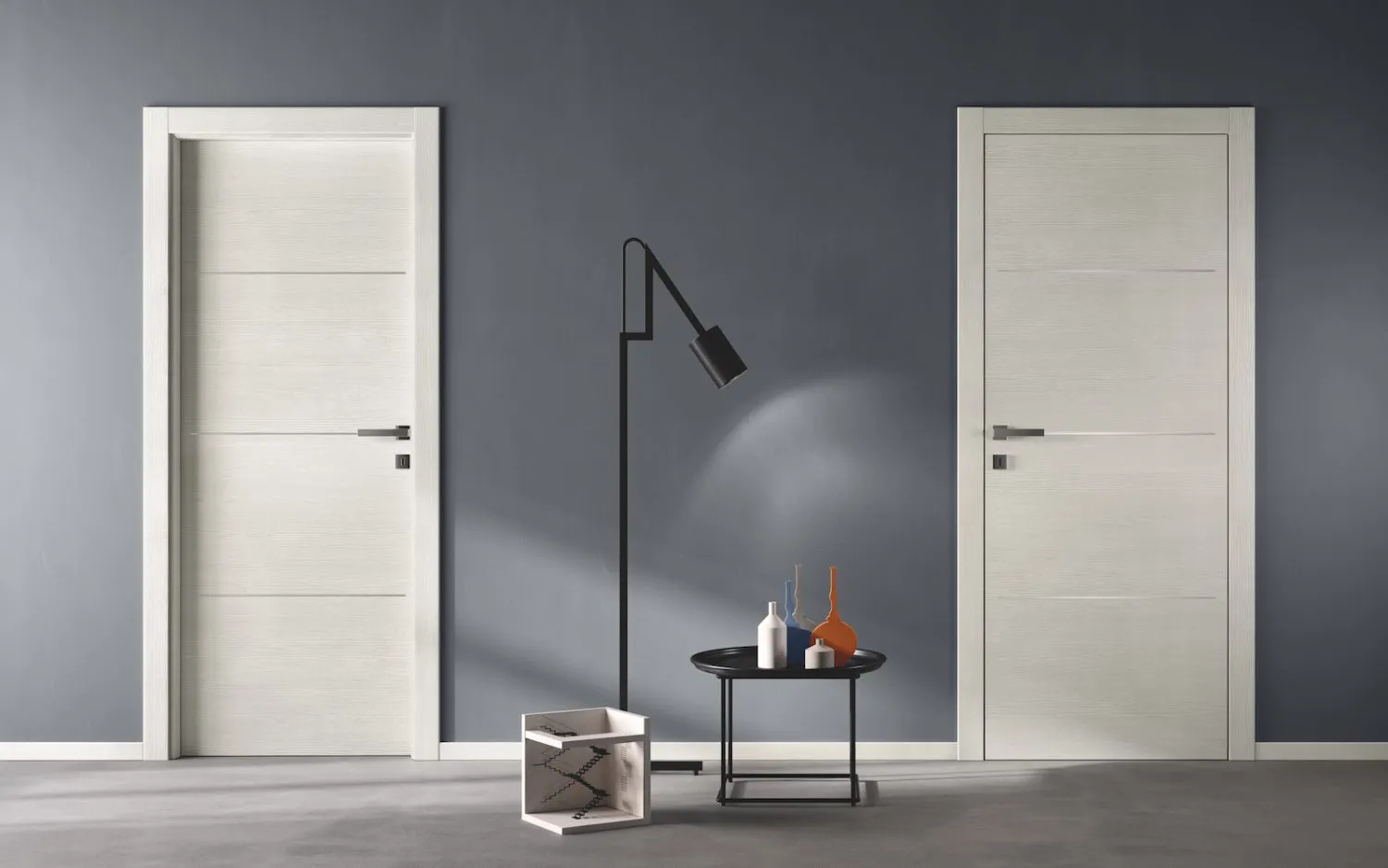
Lacquered Door Related Introduction
Brief Definition of a Lacquered Door
A lacquered door is a type of door that has been coated with a glossy or matte lacquer finish. The lacquer is a clear or colored coating applied to the surface to create a smooth, shiny, and durable layer. This finish enhances the door’s aesthetic appeal and protects against scratches, stains, and general wear. Lacquered doors are commonly used in residential and commercial spaces because of their sleek, polished look and durability.
The term “lacquered” refers to applying a lacquer, typically made from resin, alcohol, and other materials. This coating can be applied to various surfaces, such as wood, MDF (medium-density fiberboard), or metal, creating a seamless and refined surface. The lacquer is sometimes tinted to achieve different colors or effects, making lacquered doors a versatile option for any interior design style.
Importance of Lacquered Doors in Modern Interiors
Lacquered doors have become a staple in modern interior design thanks to their stylish, contemporary appearance. The smooth, glossy finish adds a touch of elegance and sophistication to any room, making them ideal for everything from minimalist spaces to more luxurious settings. These doors are often chosen for their ability to blend well with various décor styles, from clean-lined modern spaces to more traditional, high-end designs.
In addition to their visual appeal, lacquered doors contribute to a space’s overall functionality. Their smooth surface makes them easy to clean, while the protective lacquer layer ensures they remain in excellent condition for years. Whether in kitchens, living rooms, or offices, lacquered doors are highly practical and visually stunning.
In today’s design trends, lacquered doors are not just seen as functional pieces but also as statement features in homes. They offer designers the flexibility to create a unique look with a range of color options, including high-gloss white, black, and custom hues. Whether you’re going for a sleek, minimalist vibe or a more bold, dramatic statement, lacquered doors can be a perfect fit.
In summary, lacquered doors are much more than just functional elements. They elevate the entire space by adding a refined touch that complements modern aesthetics. With their versatility in color and design, these doors remain popular in contemporary home décor and interior design.
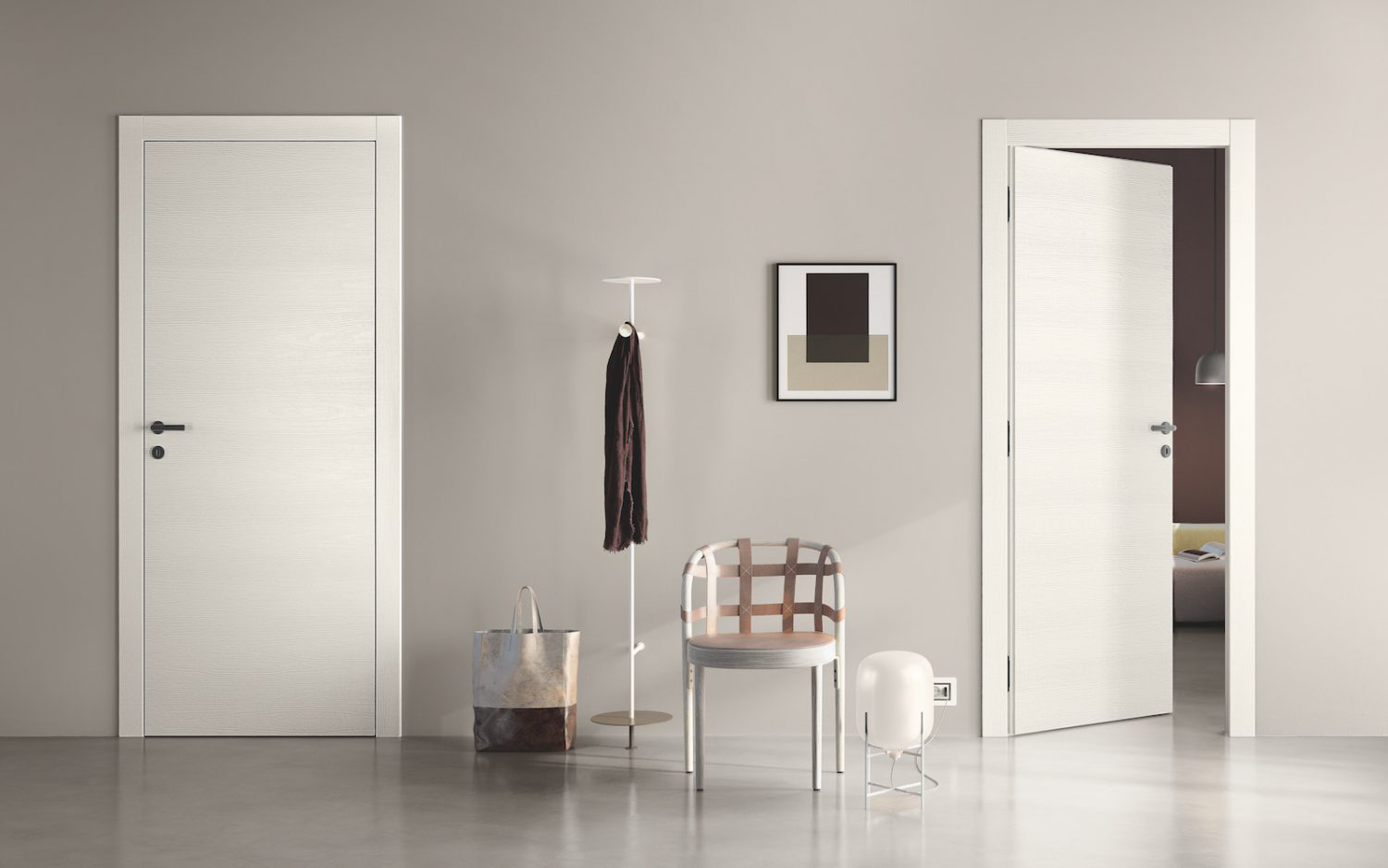
Key Features of Lacquered Door
What Makes a Lacquered Door Unique?
Lacquered doors stand out because of their exceptional finish and overall durability. These doors are designed for aesthetics and to last through everyday use. The lacquer coating sets lacquered doors apart from other door types, which creates a glossy or matte surface that is eye-catching and practical. Whether you’re looking for a door that blends into the background or makes a statement, a lacquered door can fit any style due to its versatile finish.
Let’s dive into the key features that make lacquered doors so special:
Glossy Finish and Smooth Texture
One of the most notable features of a lacquered door is its glossy finish. This smooth, shiny surface catches the light, adding a sense of luxury and elegance to any room. The lacquer creates a glass-like effect that makes the door appear sleek and modern, contributing to the space’s open and airy atmosphere.
What’s even more impressive is how smooth the surface is. Unlike traditional wooden doors that may have visible grain patterns or rough textures, a lacquered door provides a flawless, seamless finish. This smooth texture doesn’t just look good; it also feels pleasant. Whether you’re opening a door or simply admiring its finish, the glossy texture adds to the overall quality and appeal of the door.
Additionally, the lacquer coating allows for various color choices, from bright whites to deep, bold hues. This makes lacquered doors perfect for matching any décor, from minimalist to vibrant and eclectic designs.
Durability and Resistance to Wear
Beyond its stunning looks, a lacquered door is known for its remarkable durability. The lacquer finish is a protective shield, making the door more resistant to scratches, stains, and general wear. Whether in a busy home or a high-traffic commercial space, lacquered doors hold up well against daily use, keeping their appearance fresh and new for longer.
A lacquered door’s hard, smooth surface is highly resistant to moisture, dust, and dirt damage, making it easy to clean and maintain. Unlike painted doors, which may chip or fade over time, lacquered doors retain their rich, vibrant finish with minimal upkeep. This long-lasting quality is one of the reasons lacquered doors are favored for interior and exterior use.
Moreover, the lacquered surface helps to protect the underlying material, whether it’s wood, MDF, or metal, ensuring that the door structure remains solid and intact for many years. This combination of aesthetic appeal and practical durability makes lacquered doors an investment worth considering for any home or business.
Popular Lacquered Door Styles
Lacquered doors are versatile and come in various styles to suit any home or office. Whether you prefer something sleek and modern or something with a bit more personality, there’s a lacquered door style for every taste. Let’s explore some of the most popular lacquered door styles, focusing on finish options and custom designs.
Glossy vs. Matte Finishes
One of the most important decisions when choosing a lacquered door is selecting between a glossy or matte finish. Both finishes have distinct looks and feel, so the choice depends on your overall interior design goals.
1. Glossy Finish:
A glossy lacquered door has a reflective surface that shines brightly when light hits it. This finish is perfect for creating a high-end, modern look. Glossy finishes are great for smaller spaces because they help reflect light, making the room appear larger and more open. They also work well in contemporary or minimalist designs, where clean lines and sleek surfaces are key.
2. Matte Finish:
Conversely, a lacquered door has a more subtle and understated appearance. This finish doesn’t reflect light as much, which creates a softer, more muted effect. Matte doors are ideal for those who prefer a more relaxed or classic vibe. They’re also easier to maintain, as they don’t show fingerprints or smudges as easily as glossy doors. Matte finishes can bring a more natural, warm feel to a space, making them perfect for more traditional or rustic interiors.
Both finishes offer their own unique appeal, and the decision often depends on the style and mood you want to create in your space.
Custom Designs: Plain, Patterned, or Textured
Lacquered doors don’t just come in basic solid colors. One of the great things about lacquered doors is the ability to customize them to fit your exact style. You can choose from plain, patterned, or textured designs to make a statement in your home or office.
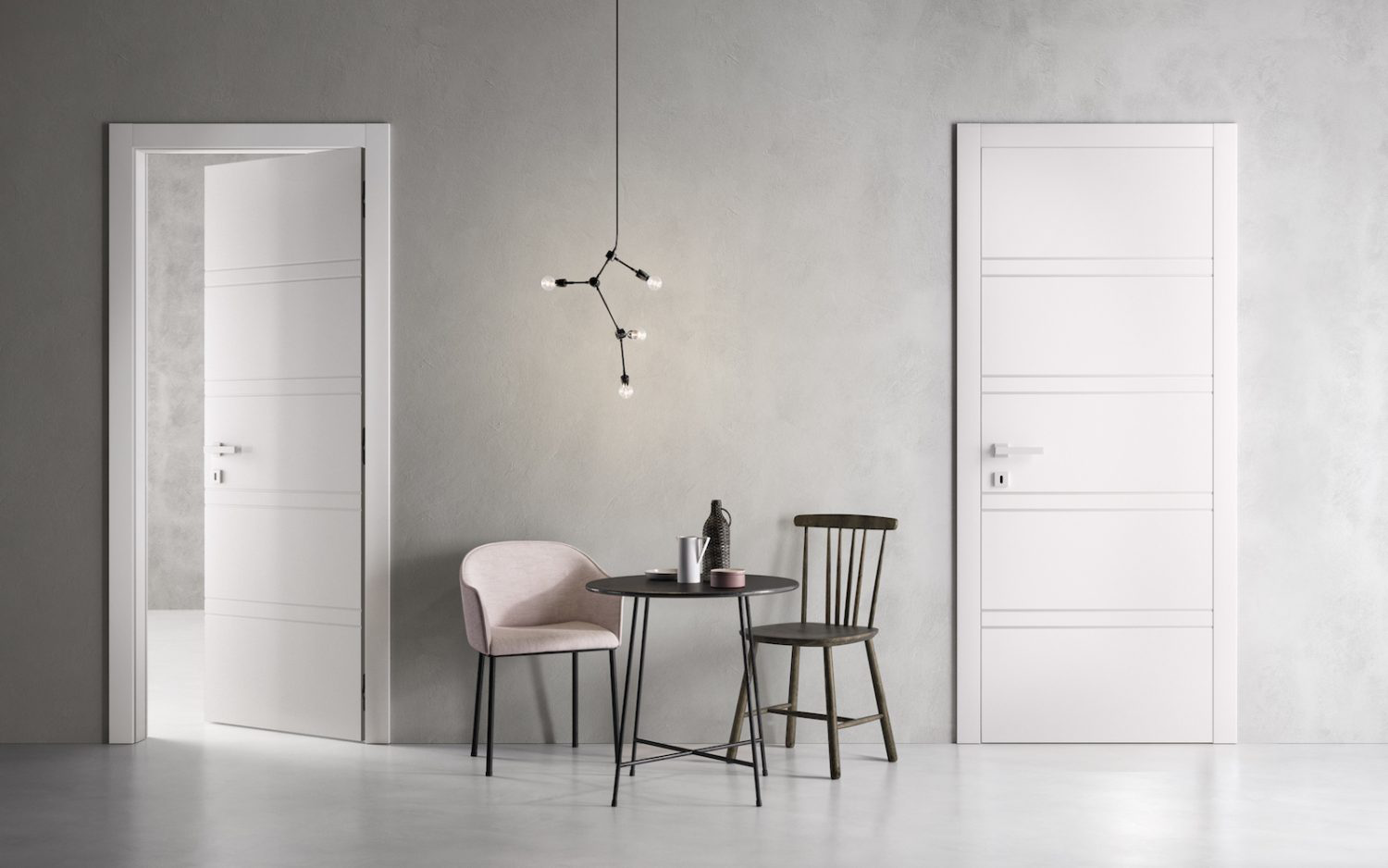
1. Plain Lacquered Doors:
A plain lacquered door is an excellent choice for those who love simplicity and clean lines. These doors feature a smooth, uninterrupted surface that can add a modern, minimalistic touch to any room. Whether you choose a glossy or matte finish, a plain lacquered door brings a sense of sophistication without overwhelming the space.
2. Patterned Lacquered Doors:
If you want to add a bit of personality and flair, patterned lacquered doors are a fantastic option. Patterns can range from subtle geometric designs to more intricate, custom motifs. These doors can serve as a focal point in a room, creating visual interest while maintaining the sleek, refined lacquer look.
3. Textured Lacquered Doors:
For a more tactile experience, textured lacquered doors combine smooth lacquer with a raised texture. These textures can add depth and dimension to the door, making it stand out uniquely. Textured doors work well in contemporary spaces, where tactile elements enhance the overall design.
Whether you opt for a simple, plain lacquered door or something more unique with patterns or textures, the customization possibilities are endless, ensuring that your door will perfectly complement your home’s interior.
Materials Used in Lacquered Door
Lacquered doors are crafted using various materials for durability, finish quality, and the ability to hold the lacquer coating effectively. The material you choose for your lacquered door can significantly impact the door’s performance and appearance. Let’s look at the most common materials used in lacquered doors.
Wood, MDF, and Other Materials
1. Wood:
Traditional wood is a popular choice for lacquered doors, especially if you want a more natural, timeless look. Wood provides a solid base that lacquer’s smooth, glossy surface can beautifully enhance. It also offers warmth and texture, making it a great choice for modern and classic interior designs. Common wood types used include oak, walnut, and maple, each bringing its unique grain and colour to the door.
2. MDF (Medium Density Fiberboard):
MDF is another widely used material for lacquered doors. It is a dense, smooth material made from wood fibres bonded together under heat and pressure. MDF is ideal for lacquered finishes because it creates a perfectly smooth surface, free from imperfections like grain patterns or knots that can be found in natural wood. It’s also more cost-effective than solid wood, making it a popular choice for residential and commercial spaces.
3. Other Materials:
Wood and MDF are the most common, but lacquered doors can also be made from metal or composite boards. These options are often used for specific needs, like achieving a sleek, industrial look or creating doors resistant to certain environmental factors.
The Role of Lacquer in Enhancing Aesthetics
The lacquer coating plays a crucial role in enhancing the aesthetics of a door. Regardless of the base material, the lacquer finish transforms the door into something visually striking. Here’s how lacquer elevates the appearance of your door:
1. Smooth, Seamless Surface:
Lacquer creates an ultra-smooth surface, eliminating imperfections that may exist in the base material. Whether it’s the subtle grain of wood or the completely flat surface of MDF, the lacquer covers it with a flawless, polished finish.
2. Color and Shine:
Lacquer can be tinted in virtually any color, allowing for various design possibilities. Lacquered doors can match your aesthetic preferences, whether you’re looking for bold, vibrant colors or subtle, neutral tones. The glossy lacquer version adds a high-shine effect, making your doors appear more luxurious and contemporary, while a matte finish offers a more understated elegance.
3. Protection and Longevity:
Beyond aesthetics, lacquer is a protective layer. It shields the door from scratches, stains, and fading, ensuring it retains its beauty for years. This makes lacquered doors a stylish choice and practical for high-traffic areas or homes with children and pets.
In short, the lacquer finish turns a simple door into a sophisticated design element. Whether the door is made of wood, MDF, or another material, the lacquer coating enhances the look and functionality, making it a timeless choice for any space.

Advantages of Lacquered Door
Aesthetic Appeal
Lacquered doors are not just functional; they are designed to elevate the look of any room. The lacquer finish adds a touch of sophistication and style, making these doors an ideal choice for anyone looking to enhance their home or office interiors. Lacquered doors can be customised to suit any aesthetic, from sleek, modern designs to more traditional looks.
How Lacquer Enhances the Overall Look of a Room?
The lacquer coating on a door doesn’t just add shine; it creates a smooth, reflective surface that catches and bounces light around the room. This makes lacquered doors particularly effective in brightening smaller spaces or rooms with limited natural light. Whether you choose a glossy or matte finish, the lacquer adds depth and richness to the door, making it a standout feature in your home.
The glossy finish, in particular, can make your entire room feel more open and airy by reflecting light from surrounding furniture and walls. On the other hand, matte lacquered doors bring a refined, soft elegance to a space without overpowering other design elements. Both finishes contribute to a polished, contemporary feel that is timeless and adaptable to various interior design themes.
Lacquered Door as a Focal Point in Interior Design
Lacquered doors often serve as the focal point in a room, especially when paired with bold colors or striking designs. Their smooth, high-gloss surfaces naturally draw attention, making them perfect for creating a dramatic entrance or accent feature. Whether in a modern living room, sleek office space, or stylish hallway, lacquered doors can be the center of attention.
Their ability to reflect light and create visual interest perfectly complements minimalist or contemporary design themes. In spaces where other design elements are subtle or neutral, a lacquered door with a bold color or striking finish can instantly inject energy into the room, making it feel more dynamic and inviting.
Lacquered doors are often used to bring focus to important spaces like entryways or rooms that need a bit of flair. Their aesthetic appeal helps create an immediate visual impact, enhancing the space’s overall design.
Durability and Maintenance
Lacquered doors are known for their long-lasting durability and ease of maintenance. The lacquer finish polishes the door and protects it from daily wear and tear. This makes lacquered doors an excellent choice for high-traffic areas where durability is essential. Let’s examine why lacquered doors are tough and easy to care for.
Why Lacquered Doors Are Easy to Clean?
One of the standout benefits of lacquered doors is their smooth, non-porous surface, which makes cleaning a breeze. Unlike traditional wooden doors that may trap dirt and grime in the grain, lacquered doors are resistant to dust buildup and can be wiped down with a soft cloth. A quick wipe with a damp cloth is usually all it takes to remove smudges, fingerprints, or other marks.
Additionally, the glossy or matte finish of the lacquer doesn’t stain easily, so you won’t have to worry about stubborn marks that can be hard to clean off. The sleek surface also prevents dirt from sticking, so your door stays fresh and shiny for longer, with minimal effort.
Resistance to Moisture and Wear
Lacquered doors are also highly resistant to moisture, making them a great option for areas like kitchens, bathrooms, or any space prone to humidity. The lacquer coating forms a protective layer that shields the underlying material from water damage, preventing swelling, warping, or fading. This makes them more durable than untreated wood doors, especially in damp environments.
Furthermore, the lacquer finish protects against scratches, dents, and other physical damage. Whether the occasional bump from furniture or the usual wear from daily use, lacquered doors hold up remarkably well. They maintain their pristine appearance for years, even in high-traffic spaces, making them a smart investment for homeowners looking for style and durability.
Variety of Finishes
One of the most appealing features of lacquered doors is the wide range of finishes available. From high gloss to satin to matte, each finish offers its own unique look and feel, allowing homeowners to choose the one that best fits their style. The variety of finishes gives you the flexibility to personalize the appearance of your lacquered door, making it an ideal option for any interior design.
High Gloss vs Satin vs Matte: What’s the Difference?
1. High Gloss:
A high-gloss lacquered door has a shiny, reflective surface that adds a touch of luxury and sophistication to any room. The mirror-like finish catches and reflects light, making the door stand out as a bold design element. High-gloss lacquered doors are perfect for contemporary, minimalist, or even glam interiors, where shine and sleekness are key features. However, they do show fingerprints and smudges more easily, so regular cleaning is necessary to maintain their pristine appearance.
2. Satin:
Satin-finish lacquered doors offer a soft, elegant sheen that falls between high gloss and matte. While not as reflective as high-gloss doors, satin doors still provide a gentle shine that enhances the room without overwhelming it. The satin finish is great for those who want a refined, subtle look that’s easy to maintain. Satin lacquered doors are also less likely to show fingerprints or dirt, making them a practical choice for busy households.
3. Matte:
Matte lacquered doors have a non-reflective, smooth surface that gives a more understated, contemporary look. This finish is ideal if you prefer a softer, more muted look for your space. Matte lacquered doors are great for rooms with lots of natural light because they absorb light rather than reflect it. They are also easier to maintain in keeping fingerprints and smudges at bay, though they may show dust more easily than high-gloss or satin finishes.
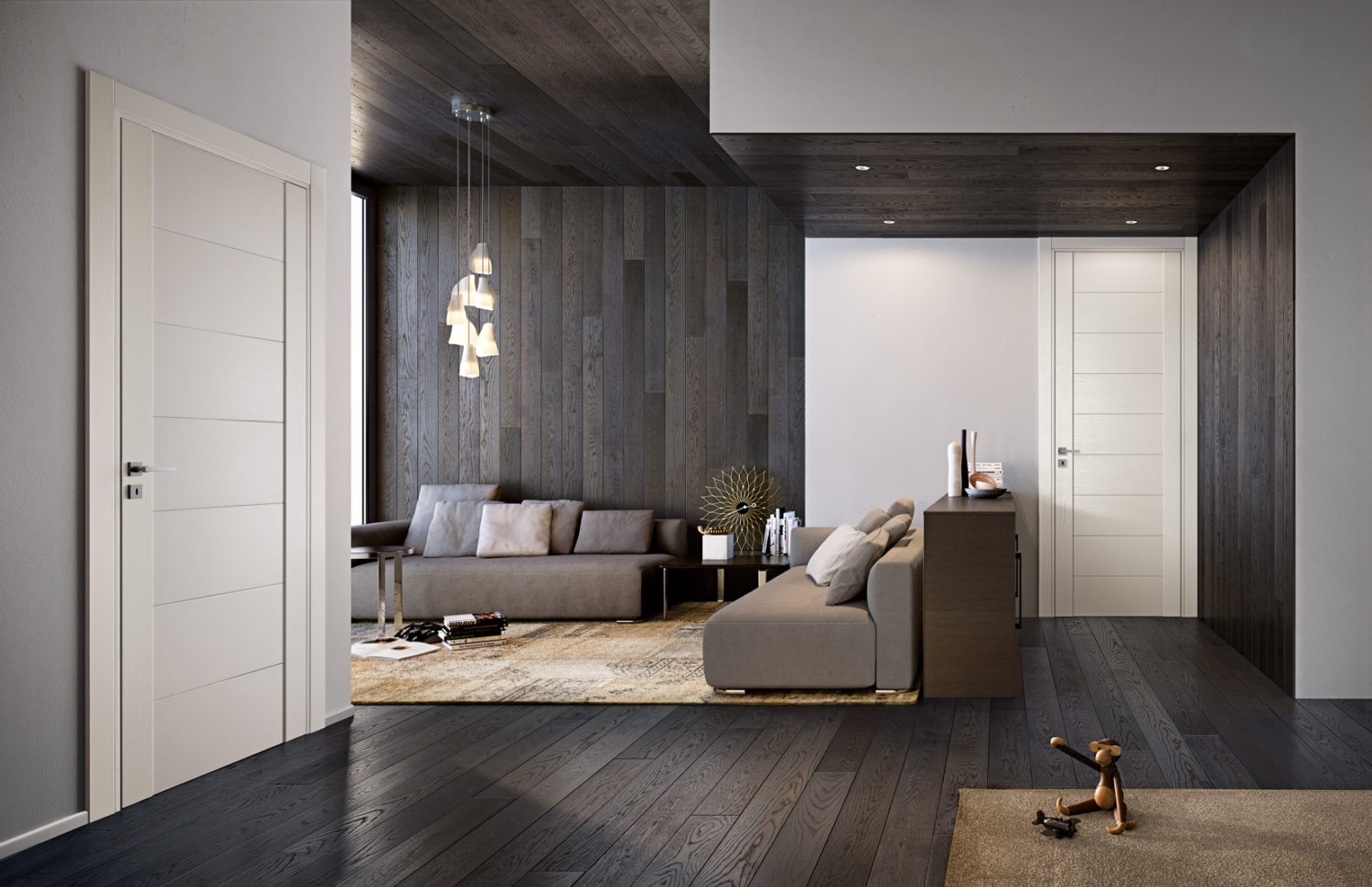
How to Choose the Right Finish for Your Home?
Choosing the right lacquered door finish depends on your style, the overall look you want to achieve, and the functionality you need. If you want a bold, striking look that commands attention, high-gloss lacquered doors might be the right choice. On the other hand, if you prefer something more subtle but still sophisticated, a satin finish could be a perfect match.
Consider your space, too. High-gloss finishes work well in modern, minimalist, or industrial designs, while satin and matte finishes fit better in traditional or cosy settings. Also, think about the level of maintenance you’re willing to do. Glossy finishes show more dirt and fingerprints, while satin and matte finishes are more forgiving.
In the end, the right lacquered door finish complements your overall interior design and fits your daily lifestyle.
Lacquered Door in Different Interior Styles
Modern and Contemporary Homes
Lacquered doors are perfect for modern and contemporary homes, where clean lines and a polished look are highly valued. Their smooth, reflective surfaces enhance the minimalist appeal central to these design styles. In modern interiors, lacquered doors serve as both functional and aesthetic pieces, contributing to the space’s overall sleek and uncluttered feel.
Minimalist Appeal with Sleek, Smooth Finishes
In minimalist homes, lacquered doors are often chosen for their smooth, glossy finish, which aligns with this style’s simple yet elegant design principles. The sleek surface of a lacquered door complements minimalist interiors by offering a clean, smooth look without unnecessary detail or ornamentation. Whether you opt for a high gloss or a satin finish, the door remains a seamless part of the room, adding sophistication without paying too much attention to itself.
Lacquered doors also work well in modern settings because they reflect light, helping to make spaces appear larger and brighter. This is especially useful in smaller rooms or apartments where maximizing natural light is key to creating a spacious feel. The minimalist design of lacquered doors allows them to blend effortlessly with furniture and décor, creating a cohesive, contemporary environment.
Traditional Homes
Lacquered doors are not just for modern or contemporary spaces; they also fit beautifully in traditional homes. Combined with classic wood designs and intricate patterns, lacquered doors can add a touch of elegance and timeless charm to any room. In traditional interiors, these doors serve as a bridge between old-world craftsmanship and contemporary functionality.
Lacquered Door with Classic Wood Designs and Patterns
In traditional homes, lacquered doors are often designed to highlight the natural beauty of wood, creating a rich, warm appearance. Combining a lacquered finish with classic wood grains or patterns gives the door a refined yet approachable look. Whether a traditional oak or walnut base, lacquered doors can enhance the wood’s natural texture while giving it a modern smooth, glossy or satin finish.
For instance, a lacquered door with a detailed panel design or subtle carvings can work beautifully in traditional settings. The glossy or matte lacquer finish enhances the wood’s natural tones and provides protection, ensuring that the intricate patterns or wood grain stay intact and vibrant for years to come. This allows the door to blend seamlessly into the overall design, whether in a cosy living room, a formal dining room, or an elegant entryway.
Commercial Use
Lacquered doors are not just a great choice for residential spaces; they also offer significant benefits in commercial settings. Offices, hotels, and other commercial spaces can use lacquered doors to enhance their interiors’ aesthetic appeal and functionality. Thanks to their sleek finish and durability, lacquered doors are increasingly favored in high-traffic areas, where design and longevity are equally important.
How Lacquered Door Is Used in Offices, Hotels, and More?
In offices, lacquered doors are commonly chosen for their clean, professional appearance and ability to make a strong first impression. Whether used in conference rooms, private offices, or reception areas, a lacquered door’s glossy or matte finish exudes sophistication and a modern touch. They can be customized to fit the branding of a business or to match the overall office theme, making them versatile enough for any corporate environment.
In hotels, lacquered doors are used to create a luxurious atmosphere. A well-crafted lacquered door can make a hotel room feel more upscale and inviting while offering the durability needed to withstand daily use by guests. The smooth surface of lacquered doors is particularly valuable in hospitality spaces, where cleanliness and ease of maintenance are key. A quick wipe-down is all it takes to keep these doors looking pristine, even in high-traffic hotel corridors.
Lacquered doors also work well in other commercial areas, such as retail stores, restaurants, and medical offices. In these environments, lacquered doors help create a polished and professional look that aligns with the overall design theme, all while offering the practicality of easy cleaning and resistance to wear.

Lacquered Door vs Other Door Types
Lacquered Door vs Wooden Doors
When comparing lacquered doors to traditional wooden doors, both offer unique advantages depending on your needs. The key differences are their aesthetics, durability, and maintenance. Let’s explore how lacquered doors stack up against wooden doors in these areas.
A Comparison of Aesthetics and Durability
1. Aesthetics:
Lacquered doors have a sleek, glossy, or matte finish that gives them a smooth, refined look. They are often chosen for modern, contemporary, or minimalist interiors, where clean lines and a polished appearance are key. The reflective surface of lacquered doors can brighten a room, making spaces feel larger and more open. In contrast, traditional wooden doors showcase the natural beauty of the wood’s grain, offering a warmer, more organic look. While wooden doors can be stained or painted in various finishes, they may not have the same uniform, high-shine look that lacquered doors provide.
2. Durability:
Lacquered doors are generally more durable than untreated wooden doors. The lacquer coating provides an added layer of protection against scratches, stains, and moisture. This makes lacquered doors ideal for high-traffic areas or rooms where the door is likely to face regular wear. While wooden doors can also be quite durable, they are more susceptible to moisture and humidity damage unless properly sealed or treated. Additionally, wooden doors may require more frequent maintenance to keep their appearance intact, especially if the finish begins to wear or the wood is exposed to harsh elements.
Regarding durability, lacquered doors often require less maintenance and stand up better for daily use than wooden doors, especially in environments with high moisture or wear. On the other hand, if you’re looking for a more natural, classic look, a well-maintained wooden door could offer a charming, rustic feel.
Lacquered Door vs Painted Doors
When choosing between lacquered and painted doors, it’s important to understand the key differences in finish, durability, and ideal application. Both options can enhance the look of a room, but they each have unique qualities that make them more suitable for different needs. Let’s dive into how lacquered doors compare to painted doors in these areas.
Differences in Finish, Durability, and Application
1. Finish:
The finish is the most noticeable difference between lacquered and painted doors. Lacquered doors have a smooth, high-gloss or matte surface that is even and consistent across the entire door. This finish gives a sleek, modern look ideal for contemporary, minimalist, or high-end designs. On the other hand, painted doors tend to have a more textured or matte appearance, depending on the type of paint used. While painted doors can still achieve a smooth look, they often lack the high-gloss, mirror-like finish that lacquered doors provide.
2. Durability:
Lacquered doors are typically more durable than painted doors. The lacquer finish creates a tough, protective layer that resists scratches, stains, and moisture. This makes lacquered doors an excellent choice for high-traffic areas or rooms with a lot of use, such as hallways or kitchens. In comparison, while still durable, painted doors can chip or peel over time, especially if exposed to heavy wear or moisture. Regular touch-ups may be necessary to maintain the appearance of painted doors.
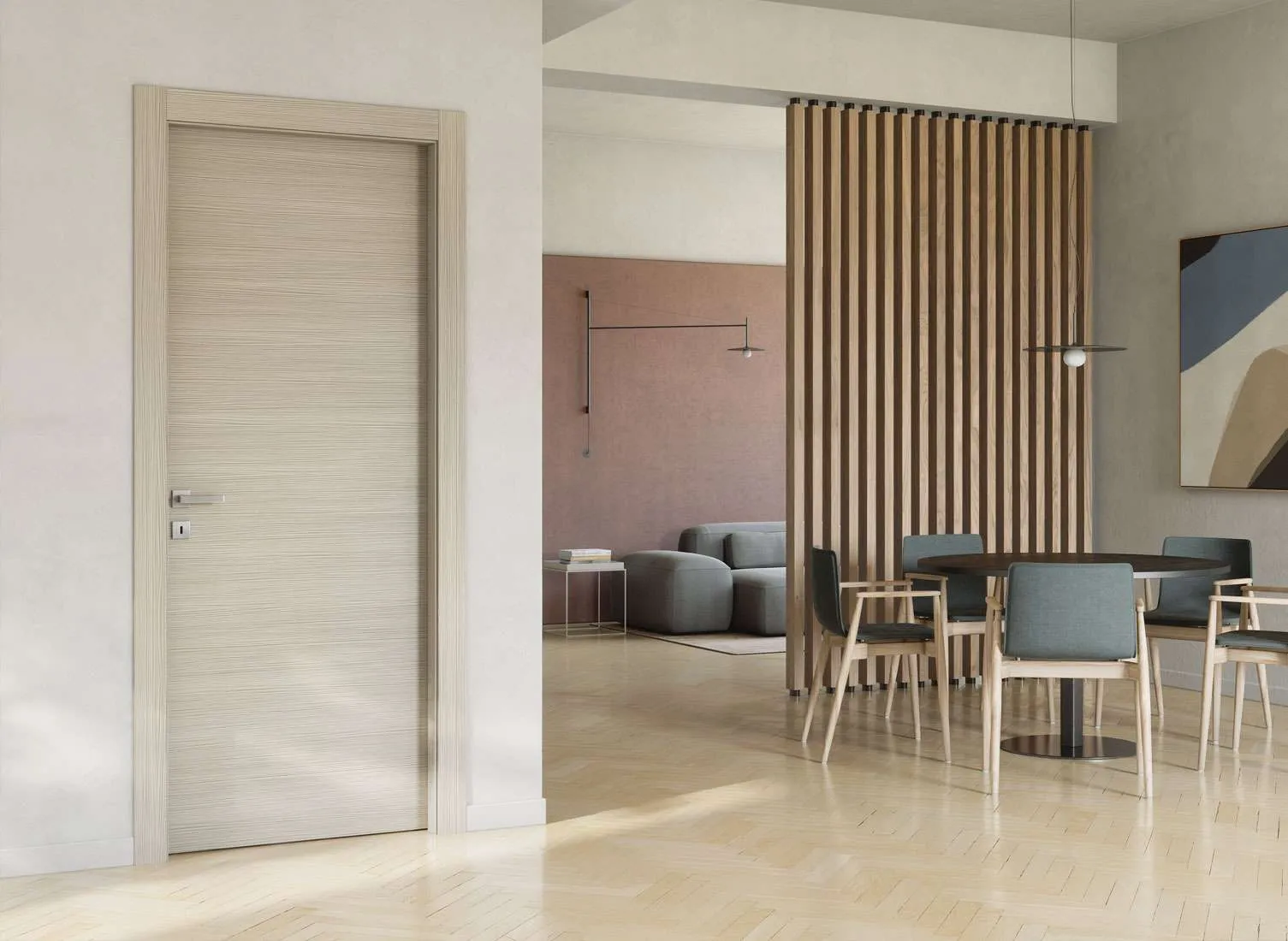
3. Application:
Lacquered doors are ideal for spaces with a desired high-quality, polished finish. Their sleek, modern look is perfect for contemporary homes, offices, or commercial spaces where style and durability are equally important. Painted doors, however, are often more versatile in customization. You can easily change the color of a painted door, making them a great option for homeowners who like to refresh their interiors frequently. However, lacquered doors offer a more uniform and long-lasting finish, making them the better choice for those who prioritize appearance and longevity.
In summary, lacquered doors offer a more polished, durable, and sophisticated finish than painted ones, making them a top choice for modern, high-traffic spaces. However, painted doors remain a flexible, customizable option for those seeking a more cost-effective solution that can change colors easily.
How to Care for Lacquered Door?
Cleaning and Maintenance Tips
Lacquered doors are known for their sleek, shiny finishes and smooth surfaces, but like any home feature, they require regular care to maintain their beauty and durability. The good news is that with a few simple cleaning and maintenance steps, your lacquered door can look as fresh as the day it was installed.
Best Practices to Keep Lacquered Door Looking Fresh
1. Regular Dusting and Wiping:
The smooth surface of a lacquered door tends to attract dust and fingerprints, especially if you’ve chosen a high-gloss finish. To keep your door looking clean, use a soft microfiber cloth to wipe it down regularly. This will remove dust without scratching the surface. Avoid using rough fabrics, which can leave marks or damage the lacquer.
2. Gentle Cleaning Solutions:
If you need to clean smudges, fingerprints, or more stubborn spots, use a mild, non-abrasive cleaner. Mix a few drops of dish soap with warm water, or choose a store-bought cleaner designed for lacquered or glossy surfaces. Apply the solution with a soft cloth, and avoid harsh chemicals or abrasive sponges, as they can dull the finish.
3. Avoid Excess Moisture:
While lacquered doors are moisture-resistant, avoiding soaking them in water is still important. Excess moisture can weaken the lacquer over time and lead to peeling. If you need to clean a larger area, ensure the cloth is damp rather than wet, and dry the door thoroughly afterwards.
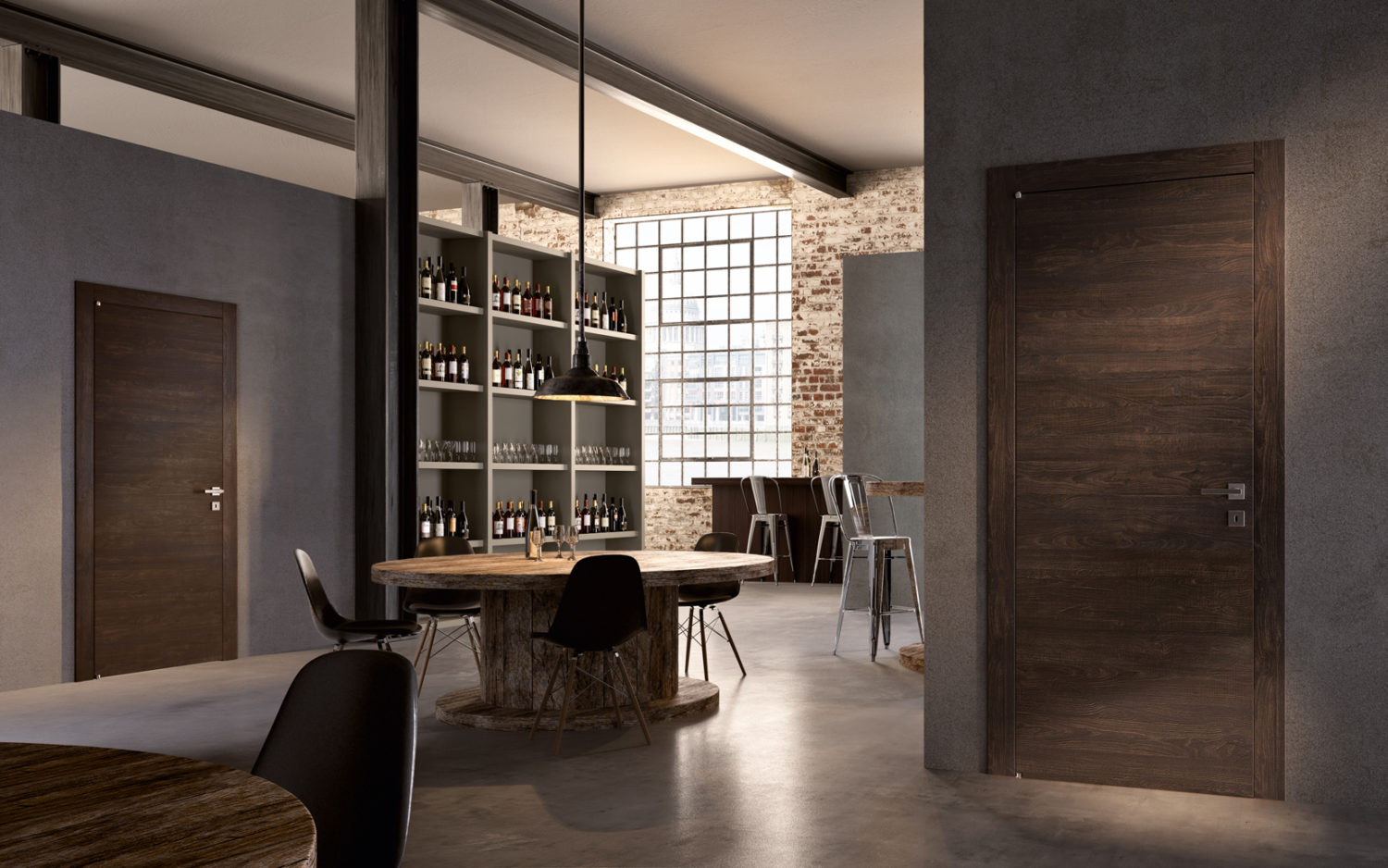
4. Polishing for Extra Shine:
To keep your lacquered door’s finish shiny and vibrant, consider using a special polish designed for lacquered surfaces. Polishing helps protect the door from minor scratches and brings out the natural lustre of the finish. Follow the product’s instructions and test it in a small, inconspicuous area first.
5. Prevent Scratches and Chips:
Lacquered doors are resistant to scratches, but they’re not completely immune. To prevent damage, avoid slamming doors or dragging heavy objects against them. If your lacquered door does get scratched, touch-up kits for lacquered surfaces can help restore its appearance.
Following these simple tips, your lacquered door will maintain its stunning finish and add elegance to your home for years. With a little care, the sleek, glossy surface will remain in top condition, making your door a lasting focal point of your interior design.
Dealing with Scratches and Dents
While lacquered doors are highly durable, they can still suffer from occasional scratches or dents due to everyday use. Fortunately, the smooth, glossy surface of lacquered doors makes it possible to restore them to their original condition with just a little effort. Here are some easy fixes to help keep your lacquered door looking flawless.
Easy Fixes to Restore the Smooth Surface
1. Minor Scratches:
If you notice light scratches on your lacquered door, they can often be repaired easily. Clean the affected area with a soft, damp cloth to remove dirt or debris. Once it’s clean, use a touch-up lacquer or polish that matches the finish of your door. Gently apply it to the scratched area with a soft cloth, and let it dry according to the product’s instructions. The lacquer will fill in the scratch and blend in with the rest of the surface.
2. Deep Scratches or Dents:
The repair process may take more effort for more noticeable damage, such as deeper scratches or small dents. Start by gently sanding the affected area using fine-grit sandpaper, ensuring it does not damage the lacquer. Once the area is smooth, clean it again and apply a thin lacquer layer. Allow the finish to cure completely before lightly sanding it down to match the rest of the surface. This process may take a few applications, but your door will look as good as new with patience.
3. Professional Help:
If the damage is too severe for a DIY fix, it may be worth consulting a professional to restore the lacquered door. Professionals can perform a more thorough repair, restoring the finish to its original shine and smoothness.
By following these simple steps, you can keep your lacquered door in top condition and ensure its beauty lasts for years.
Lacquered Door Prices and Installation
Cost of Lacquered Door
Lacquered doors come in various styles, sizes, and finishes, which means the price can vary significantly depending on your preferences and the specifics of your project. Whether you’re looking for a standard lacquered door or something more customized, it’s helpful to understand the general price range and what factors influence the cost.
Price Range for Standard and Custom Lacquered Door
1. Standard Lacquered Doors:
A standard lacquered door typically falls in the mid-range of door pricing. Prices for these doors can start as low as $100 to $250 for smaller, basic designs with a simple finish. These are great options for budget-conscious homeowners looking for a sleek, modern look without the added cost of custom designs.
2. Custom Lacquered Doors:
Custom lacquered doors will cost more for a more personalised touch. Prices for custom options can range from $300 to $600 or higher, depending on the complexity of the design, the materials used, and the finish selected. Custom lacquered doors often feature unique patterns, specialized finishes, or premium materials like solid wood or MDF, which can increase the overall cost. Additionally, intricate designs and custom color choices can add to the price.

When budgeting for lacquered doors, it’s important to consider additional installation costs, which can vary depending on your location and whether you hire a professional or do it yourself.
Installation Process
When it comes to installing lacquered doors, the process can vary depending on whether you choose professional installation or decide to do it yourself (DIY). Both options have pros and cons, and understanding what’s involved can help you make the best decision for your needs and budget.
Professional Installation vs DIY: What to Know
The final step is installing additional hardware, such as door handles, locks, or weatherstripping. Apply a finish or protective coating to protect the door from wear and tear depending on your pivot door material.
1. Professional Installation:
Hiring a professional to install your lacquered doors ensures that the job is done right the first time. Professionals have the tools and expertise to handle the complexities of the installation, including accurate measurements, proper fitting, and ensuring the door operates smoothly. Professional installation may be the best option to avoid mistakes affecting the door’s appearance or function if you opt for custom lacquered doors with unique dimensions or finishes. Professional installation costs generally range from $100 to $300, depending on your location and the job’s complexity.
2. DIY Installation:
If you’re comfortable with basic home improvement tasks and have the right tools, installing a lacquered door yourself can be cost-effective. DIY installation typically requires measuring the doorway, installing the door frame (if necessary), and hanging the door correctly. The process can be straightforward if you’re using a standard door and have prior experience with door installation. However, the process can become more challenging if your lacquered door is heavy, has intricate designs, or requires adjustments to fit perfectly. In general, DIY installation can save you money on labor costs, but weighing the time, effort, and potential for errors is important.
Choosing between professional installation and DIY depends on your confidence, skill level, and whether you want a flawless finish from the start. Professional installation might be worth the investment to ensure your lacquered door fits seamlessly into your home.
Maintenance Tips for Lacquered Door
Lacquered doors are not only visually appealing but also designed to last. However, like any high-quality finish, they require maintenance to keep them looking their best. Here are a few tips on how to care for and maintain your lacquered doors.
Cleaning and Polishing Lacquered Door
Cleaning your lacquered door properly is essential to preserve its shiny, sleek look. Thankfully, it’s a straightforward process. Follow these simple steps to maintain the door’s finish and ensure it remains beautiful over time.
Best Products and Methods for Cleaning
When cleaning lacquered doors, choosing the right products is important to avoid damaging the surface. Stick to gentle, non-abrasive cleaners to preserve the door’s finish.
1. Microfiber Cloths:
Always use a soft microfiber cloth when wiping down your lacquered door. These cloths are perfect for removing dust, dirt, and fingerprints without leaving streaks or scratching the surface.
2. Mild Soap and Water:
A mix of mild soap and lukewarm water works wonders for regular cleaning. Dip the cloth into the solution, wring it well, and gently wipe the surface. Avoid soaking the cloth, as excessive moisture can damage the lacquer over time.
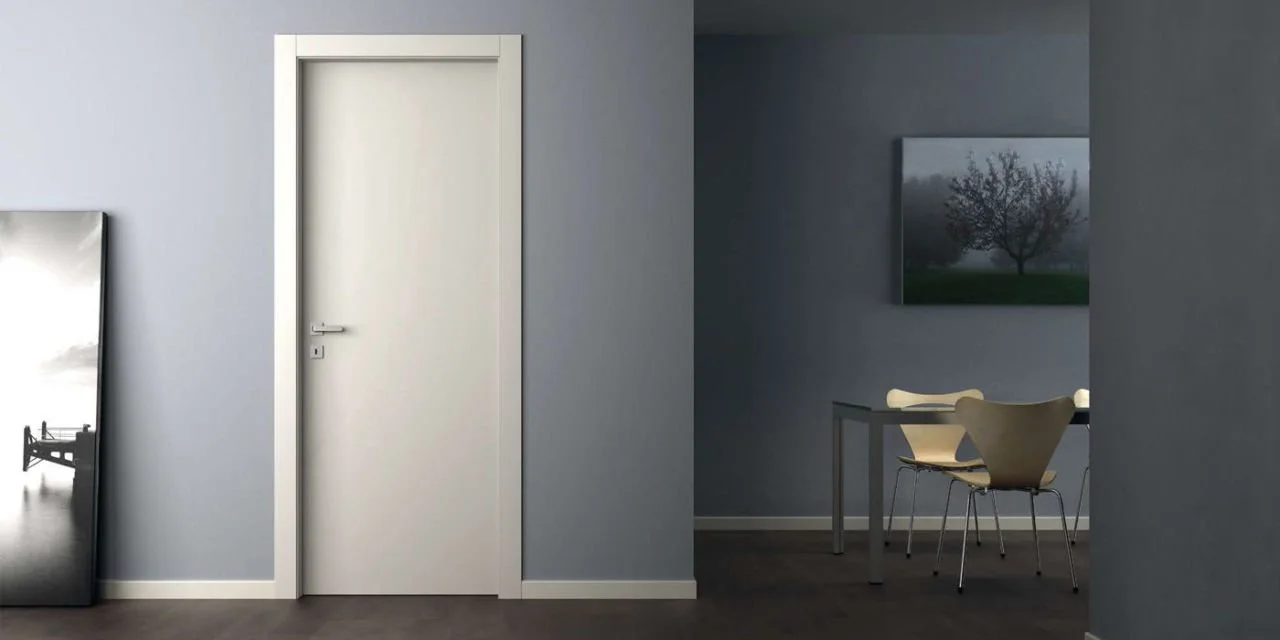
3. Commercial Lacquer Cleaner:
Specialised cleaners are made for lacquered surfaces if you want to go the extra mile. These products are formulated to clean and maintain the finish without stripping it. Look for cleaners specifically labelled as safe for lacquered or high-gloss surfaces.
4. Avoid Harsh Chemicals:
Avoid harsh chemicals like ammonia, bleach, or abrasive cleaners, as these can dull the glossy finish and cause damage to the lacquer.
5. Spot Cleaning:
If you notice stubborn stains like grease or sticky spots, use a gentle glass cleaner or vinegar and water solution. Lightly spray the affected area and wipe it down carefully.
How to Maintain the Glossy Finish?
One of the main appeals of lacquered doors is their glossy, shiny finish. However, maintaining that high-gloss appearance requires a bit of attention.
1. Regular Dusting:
Dust can dull the finish over time. Regular dusting is essential to keep the lacquered surface looking smooth. Use a soft, dry microfiber cloth to remove dust from the surface. Clean the edges and corners, as dust can easily accumulate there.
2. Polishing:
To maintain that glossy finish, use a polishing product for lacquered surfaces. Apply the polish with a soft, lint-free cloth and buff in small, circular motions. Be sure not to over-polish, as it can make the surface too slippery or cause build-up. Aim to polish your lacquered door every few months, depending on wear and tear.
3. Avoid Abrasive Materials:
Never use steel wool or abrasive sponges when maintaining the glossy finish, as they will scratch the surface. Even paper towels can be too rough, so it’s always best to stick to a microfiber cloth.
4. Protect From Direct Sunlight:
Extended exposure to direct sunlight can cause the lacquer finish to fade and lose its sheen. Place your lacquered door away from direct sunlight, or use curtains to protect the door from UV rays.
5. Fixing Minor Dings or Scratches:
If your lacquered door has minor scratches or imperfections, you can gently buff them out with a polishing compound. Consider consulting a professional to repair and re-coat the door for deeper scratches.
Preventing Damage to Lacquered Door
Lacquered doors are durable but can still be prone to scratches, dents, and fading if not properly cared for. Following a few simple steps, you can keep your doors looking as good as new for years.
Tips for Avoiding Scratches, Dents, and Fading
1. Keep Sharp Objects Away:
One of the easiest ways to prevent scratches on your lacquered door is by keeping sharp or heavy objects away from the surface. Avoid letting keys, belts, or other hard items come into contact with the door. Be especially cautious if you have small children or pets as they can accidentally scratch the finish.
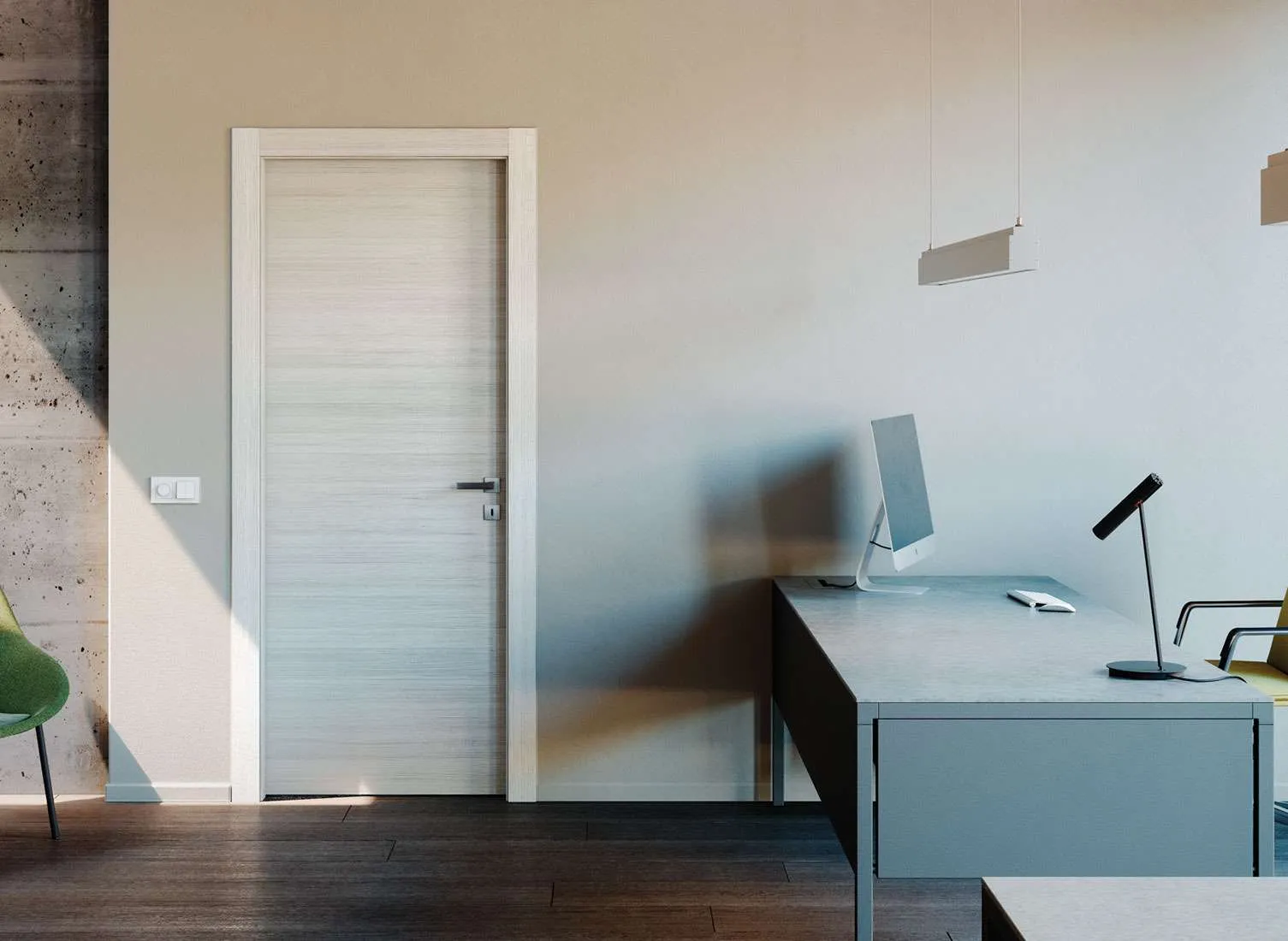
2. Use Felt Pads on Furniture:
If your lacquered door is near furniture that moves often, like a table or chair, apply felt pads underneath the legs to prevent scratches. This small change can make a big difference in protecting the lacquered surface from damage.
3. Close the Door Gently:
Lacquered doors are strong but not indestructible. Slamming doors can cause dents or even damage the finish over time. Encourage gentle use, especially in high-traffic areas, to maintain the door’s integrity.
4. Avoid Direct Sunlight:
While lacquered doors are designed to be durable, prolonged exposure to direct sunlight can cause the color to fade. To prevent fading, consider using curtains or blinds to shield your door from harsh sunlight. Alternatively, use UV-protective film on your windows to reduce the impact of sun exposure.
5. Control Humidity and Temperature:
Extreme changes in temperature and humidity can affect the lacquer on your door. Wood can expand or contract depending on the climate, and this can cause cracks or warping. To avoid this, maintain a stable indoor climate and avoid placing lacquered doors in areas subject to frequent temperature swings, like near heating vents or direct drafts.
6. Regular Inspections and Touch-Ups:
Over time, wear and tear can appear on any surface, including lacquered doors. Check for chips or damage regularly and, if needed, use a matching touch-up lacquer to fill in any small imperfections. This will help maintain both the appearance and the protection of your door.
By following these tips, your lacquered doors will remain in excellent condition, providing both beauty and functionality for years. Extra care goes a long way in preserving their glossy finish and protecting them from everyday damage.
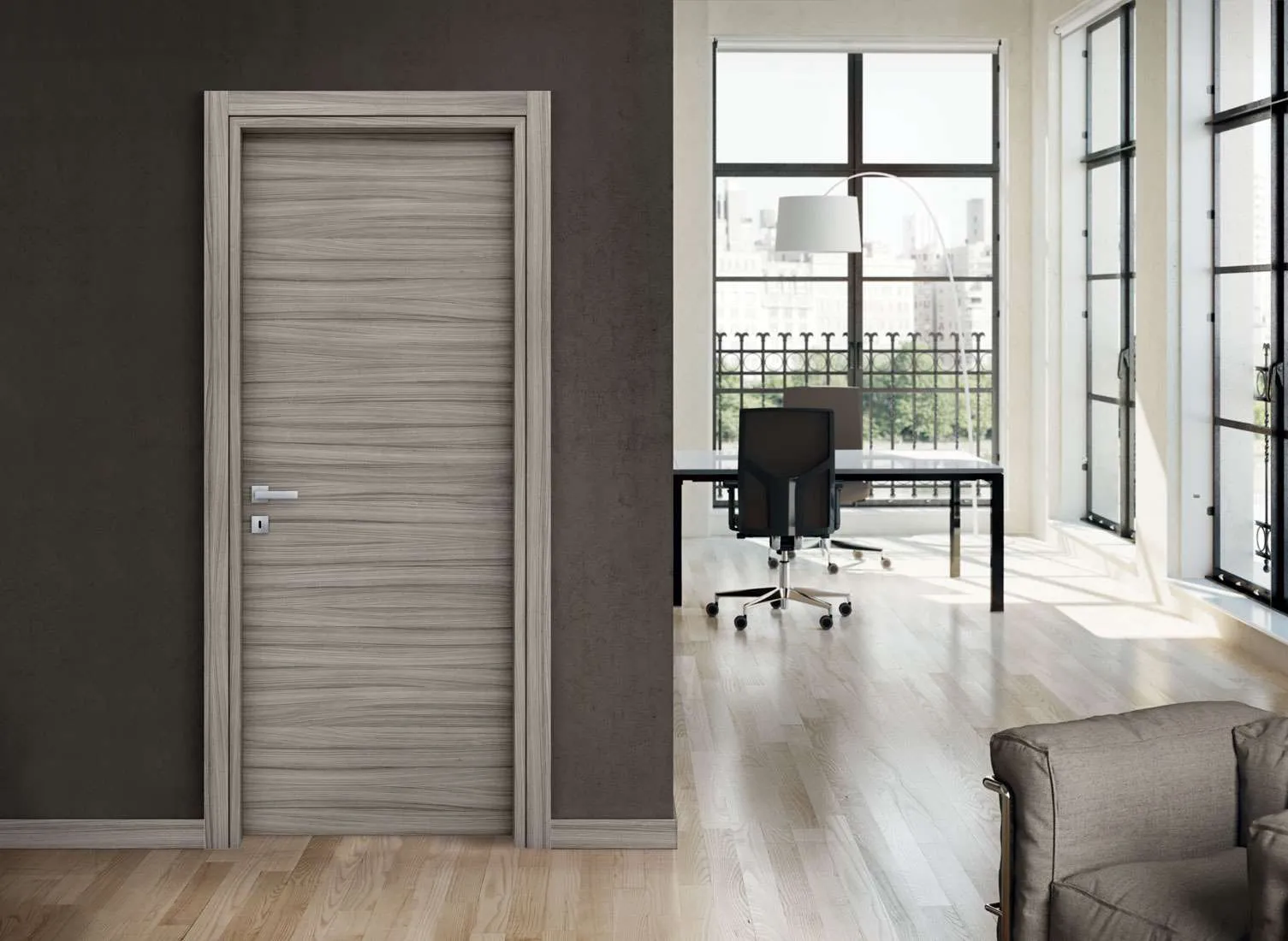
Relate FAQ
What is a lacquered door?
A lacquered door is finished with a smooth, glossy, or matte coating that enhances its appearance, protects the surface, and provides a durable, scratch-resistant layer.
How are lacquered doors made?
Lacquered doors are typically crafted by applying multiple layers of lacquer to the door surface, followed by sanding and polishing for a flawless finish.
Are lacquered doors suitable for humid environments?
When properly sealed, lacquered doors are often moisture-resistant, making them suitable for humid areas like kitchens or bathrooms.
How do you clean and maintain a lacquered door?
Use a soft cloth dampened with mild soap and water to clean lacquered doors. Avoid harsh chemicals or abrasive materials that could damage the finish.
Can you customize the color of a lacquered door?
Absolutely! Lacquered doors are available in various colors and finishes, allowing homeowners to customize them to match their interior décor.
Are lacquered doors environmentally friendly?
Many manufacturers offer environmentally friendly lacquer finishes that reduce volatile organic compounds (VOCs) and are safer for indoor air quality.
What types of spaces benefit most from lacquered doors?
Lacquered doors are perfect for modern or minimalist interior designs, residential homes, offices, hotels, and luxury apartments due to their sleek appearance and durability.
How do lacquered doors compare to painted doors?
Lacquered doors typically offer a smoother and more durable finish than painted doors, with greater resistance to wear and tear.
Share This Story, Choose Your Platform!
Send Us A Message
*100% Privacy Guaranteed

